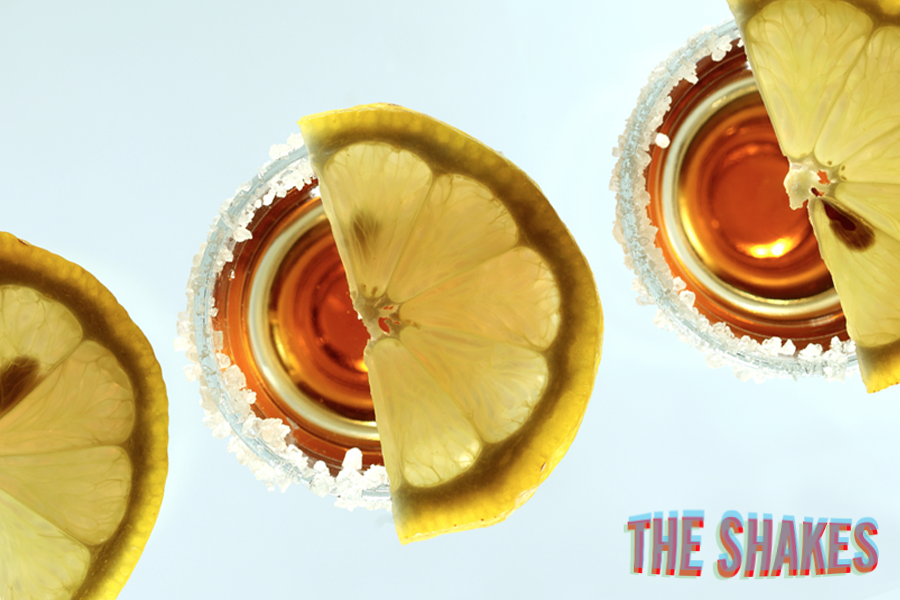The ballad of a night out on tequila goes something like this: Rounds of shots. Impromptu karaoke. After-party after parties. Blurry makeout sessions. Spinning rooms. Riotous vomiting. Cavernous shame and regret.
Never again, you say.
Tequila makes me crazy, you say.
I just want to fuck strangers when I drink that stuff, you say.
The myths surrounding agave-based spirits — i.e., tequila and mezcal — are both numerous and deeply entrenched: They’re stimulants; they’re aphrodisiacs; they’re a one-way ticket to a night in jail—and the worst hangover of your life.
None of it’s true. But there’s definitely something about drinking agave that’s different from drinking other spirits.
And so, in honor of Cinco de Mayo, here’s my myth-busting guide to my favorite booze — tequila and mezcal.
Myth #1: Tequila is the national drink of Mexico.
Nope. That’s mezcal. “Mezcal is much more of a traditional spirit in Mexico, and it’s one of the oldest spirits, if not the oldest spirit,” explains Robin Miller, head bartender at Espita Mezcaleria in Washington D.C. “There are good tequilas out there, but for the most part, tequila is bastardized mezcal. Tequila took traditional mezcal and changed it to fit the American palate and the need for large-scale production.”
Tequila and mezcal are both made from the agave plant, a wild succulent that grows throughout much of Mexico. Harvested at least since the time of the Aztecs, agave plants have been used by the indigenous peoples of Mexico for centuries — in food, in medicine, in building materials, and yes, in alcohol. On the last count, agaves of all varieties were harvested, and their hearts roasted, crushed, fermented and distilled into hard alcohol. This traditional drink retained the flavors of the land, the climate and the way each individual distiller — the mezcalero — made their product. Consistency was practically unheard of, nor was it desired. Drinking mezcal was drinking in a place, and in many ways, a people.
“It’s rustic, humble, brazen, fiery and romantic all at the same time,” Emma Janzen, Imbibe magazine’s digital content editor, writes in her book Mezcal: The History, Craft & Cocktails of the World’s Ultimate Artisanal Spirit. “Historically, special mezcals have been made to celebrate the births of children, offered to sanctify marriages and poured to commemorate the dead at funerals.”
Mezcal, then, predates tequila, which must be made with 100 percent blue-agave plants (instead of whichever variety populates the local terrain), and the hearts are steamed, not roasted, eliminating much of the earthy quality unique to each mezcal. The traditional religious and medicinal uses of mezcal — something that was banned in colonial times due to their connection with pagan customs as well as the fact that they competed for market share with Spanish wines and brandy — are also absent from the history of tequila.
“Mezcal tastes like time,” Janzen writes.
Myth #2: Tequila and mezcal are meant for shot glasses and rapid consumption.
Again, wrong. Tequila and mezcal should be sipped, and that sipping should take some time. Nor should either require salt and/or a lime to wash its taste from your mouth. “The way people drink agave in the U.S. is like a pornographicazation of drinking culture,” Miller says. “It’s just shots, shots, shots, and none of the experience of actually drinking, which is what it’s meant to be about.”
“Part of what we do at Espita — and what cocktail bars in general are about — is the opposite of that,” he continues. “We’re not binge drinking. We’re enjoying the flavors; we’re enjoying the experience and textures. It’s about the process.”
“I don’t know too many people who come to Espita with the intention of getting drunk,” partner and general manager Josh Phillips says. “That’s a byproduct for many, but they come in because they want to experience different things.”
In other words: It’s about the journey, friends, not the destination.
Myth #3: Tequila is a stimulant.
When people say tequila acts as a stimulant, they’re not exactly wrong, but they’re definitely not right either. Ethanol is a depressant. That means it blocks and inhibits receptors in the brain, causing a sedating effect. Yet we all know that after a drink or two, party’s on. Your speech flows more freely; you’re more social with strangers; any social awkwardness rapidly diminishes; and spontaneous singing and/or dancing may occur.
But according to clinical psychologist Michaele Dunlap: “Being ‘stimulated’ by alcohol actually amounts to a depression of self-control. A principal effect of alcohol is to slow down brain activity, and depending on what, how much and how fast a person drinks, the result is slurred speech, hazy thinking, slowed reaction time, dulled hearing, impaired vision, weakened muscles and fogged memory.”
Essentially what she’s saying is that reasonable amounts of alcohol depress the parts of the brain related to regulating self-control just enough to make you more uninhibited (i.e., more fun).
Also, persuasion is powerful, and the placebo effect is real. “If you think agave is going to wake you up, you’re going to feel pumped up,” says Jared Sadoian, bar manager of The Hawthorne bar in Boston and brand ambassador for Fortaleza tequila. “I’m probably not doing any service to dispel these myths, but if you believe that tequila is going to make you have a good time, then hey, believe what you believe.”
Myth #4: Tequila will make you puke your guts out.
“People talk about tequila making you sick the same way they talk about how mixing alcohols will make you sick,” Miller says. “But few people start their nights off with shots of tequila. For most people, that’s bar number two, three or four. Of course by your ninth drink, tequila’s gonna ruin your day. You’ll be fine, though, if you don’t drink six drinks in an hour.”
Myth #5: Tequila will cause the nastiest hangovers known to man.
“There’s science that points to the compounds in wine — esters, tannins, things like that — that do truly contribute to how you feel, particularly the next day,” Sadoian says. “Your body has to process those additives differently, even if they’re natural additives coming from grapes.”
Tequila and mezcal, on the other hand, doesn’t come with any of that. “Quality tequila and mezcal are crushed agave that’s been roasted slowly and then fermented and distilled,” Sadoian says. “There’s nothing else that goes in the bottle.”
That’s why unaged (blanco) tequilas or mezcal are the best thing to drink if you want to minimize your hangover.
And everyone I spoke to agrees: Drinking quality, clear and 100 percent agave spirits (none of this Cuervo Gold bullshit or cheap bottles with a dead insect in the bottom) truly does limit the pain and suffering of the next day. “I can drink for a long time, and I wake up in the morning feeling pretty okay,” Sadoian says about his agave-fuelled trips to Mexico to meet with distillers. “I’m not going to say great, but I feel much better than I do if I drink cocktails or a bunch of red wine or whiskey.”
Myth #6: Big-batch tequila is all that’s out there.
Come on, it’s 2018, you can find the small-batch stuff even at your local grocery store. In particular, look for single-village mezcals, like Del Maguey and Mezcal Vago, or tequilas that are made in small batches, like Fortaleza and Tequila Ocho. They’ll definitely cost you a bit more, but you’re supporting a way of life and a family, not a giant corporation. “Those dollars go a lot further for the families in Mexico,” says Miller.
And if you have a minute (and if your bartender has a minute), ask about the bottles on their shelves. “It shouldn’t just be, I drink this because I like the way it tastes,” Sadoian says. “It should be, I drink this because I like the way it tastes, and it comes with this layer of generations and generations passing down their traditions to me.
“I don’t know how you tell that story in 10 seconds, but it’d be great if people gave us the chance to try.”

